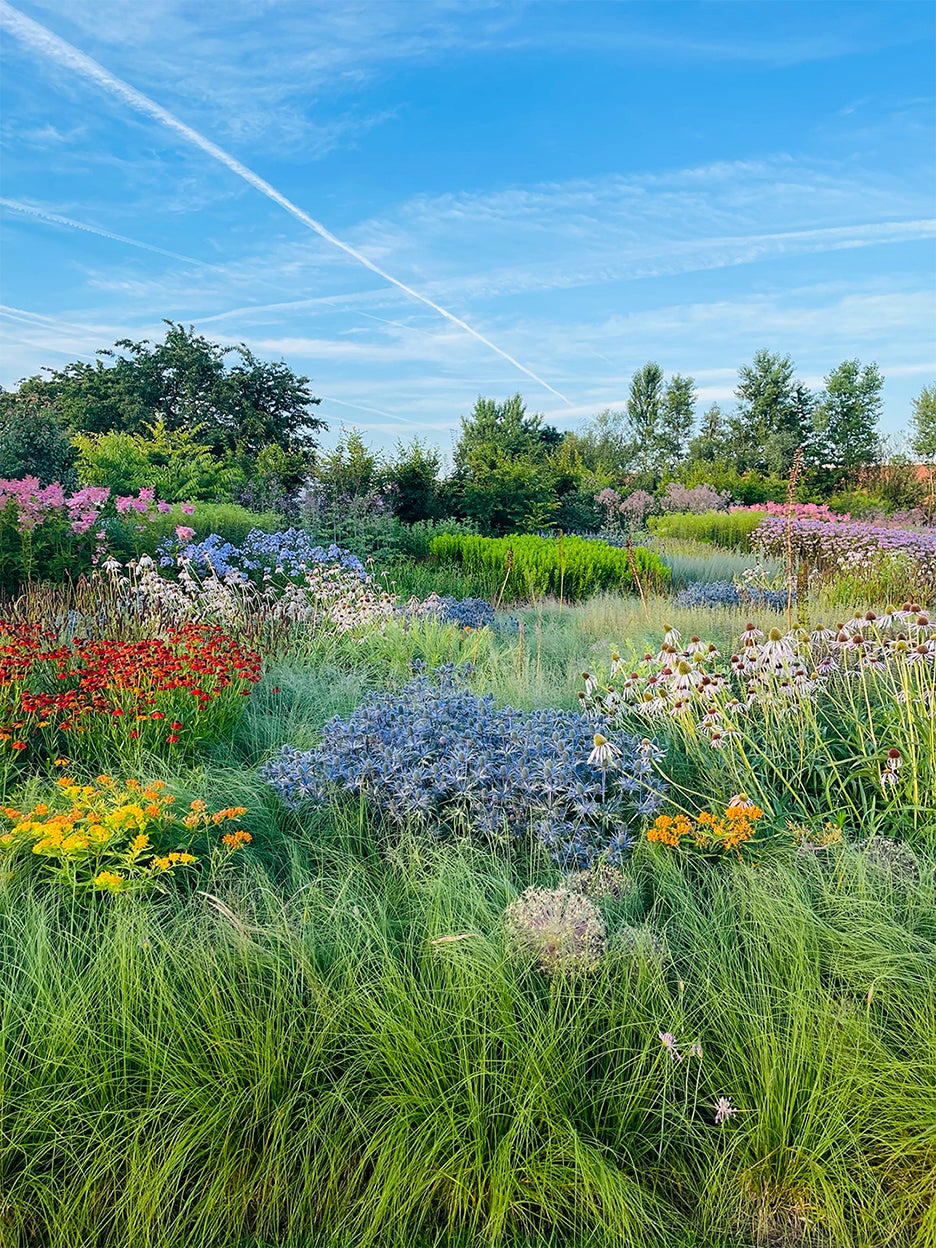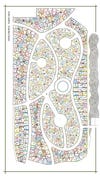Legendary Garden Designer Piet Oudolf Shares His Go-To Tools
And how you can make your outdoor space glow up year-round.
Updated Oct 12, 2018 2:02 AM
We may earn revenue from the products available on this page and participate in affiliate programs.
Visiting the Vitra campus just outside Basel, Switzerland, is like getting a golden ticket to the chocolate factory—but for design nerds. Buildings by the likes of Frank Gehry, Zaha Hadid, and Herzog & de Meuron dot the bucolic destination, where production for pieces by Vernor Panton and Charles and Ray Eames also takes place.
But as of this summer, it’s not only the standout architecture that steals the show. Stroll outside the angular flagship shop VitraHaus, past the geodesic dome by Richard Buckminster Fuller, and you encounter a sea of layered and lush plant life. Created by pioneering Dutch garden designer Piet Oudolf—the man behind Manhattan’s High Line—the 43,000-square-feet green space is a meditative full immersion for the senses.
Comprised of some 30,000 plants that spotlight Oudolf’s long-held love of sustainable and self-generating perennials, shrubs, and wild grasses and flowers, the garden’s loose and organic feel belies meticulous planning and care. The end goal: a landscape that blooms year-round, forming a community (according to Oudolf) of plants that each have their moment in the proverbial sun. (No wonder the resident honeybees are so happy.)
Currently on-site for a project in Majorca, Spain, Oudolf spoke with Vitra U.S. president Melissa Shelton about the art of getting lost in a garden, the trusty tools he’s had for more than 20 years, and more.
How did the Vitra campus influence your vision for the gardens?
It’s an amazing architectural site, as you know, and there was a totally different approach to making the garden. It’s the context and the building [VitraHaus] that add special value. I kept in mind what visitors would see when looking out one of the big windows, [so] there’s a good repetition of planting groups that you can see from above—a sort of pattern that graphically looks quite nice. That’s always something I keep in mind: If there’s a view from a building that is taller.
What do you suggest for making a garden beautiful year-round?
If you are a home gardener, you probably have limited space, but take care that your garden is covered by plants that are flowering in a few different periods—don’t forget late summer and fall. Bulbs are great additions for every season. It’s hard to teach people this process right away, so that’s when you need books to know what to do.
How do you not have a focal point and allow visitors to “lose themselves” in the landscape? Is there a way to make an existing garden feel more organic and free-flowing?
If you are designing with a lot of straight lines, you focus on the end of the line and have a focal point. But the Vitra garden is a meandering system of plants and paths where you don’t see an end. There’s more variety in perspective because you bend from one view to another. You keep moving around.
How would you describe your approach to designing the Vitra garden versus the High Line?
The High Line is a mix of woodland fields and more sophisticated plants that change over the entire length of the project and tell a story. It’s a different concept being that it’s a linear garden. For Vitra, the garden has three sections that you probably only notice from above or from the drawings, but when you walk through you have a feeling of belonging. One is a group of plantings that traditionally grow together; another section is for fuller, robust plants, some 6 feet tall; and the middle is more natural because of the use of grasses—everything goes out from there.
What gardening tools and/or tricks do you love?
There aren’t really any tricks in gardens; it’s more knowledge that you need. As for tools, my favorites [are from] the Sneeboer line. They will last a lifetime. I’ve had their small stainless steel hoes and hand rakes for more than 20 years. Most garden tools are not so strong!
What tools do you use in your planning process?
I start with colored pencils and markers. I like to see the balance and repetition of where the plants will go from one end to the other. The colors I use in the design drawings are not necessarily the colors of the flowers; it’s more that I give them a color so I know what it is.
I loved visiting the garden last week. It was truly a special experience—and it must look different based on the time of year. When do you recommend people visit?
The garden is always changing. Next time you go it will probably look even better than now. It gets better with time.
[This interview has been lightly edited for clarity.]






